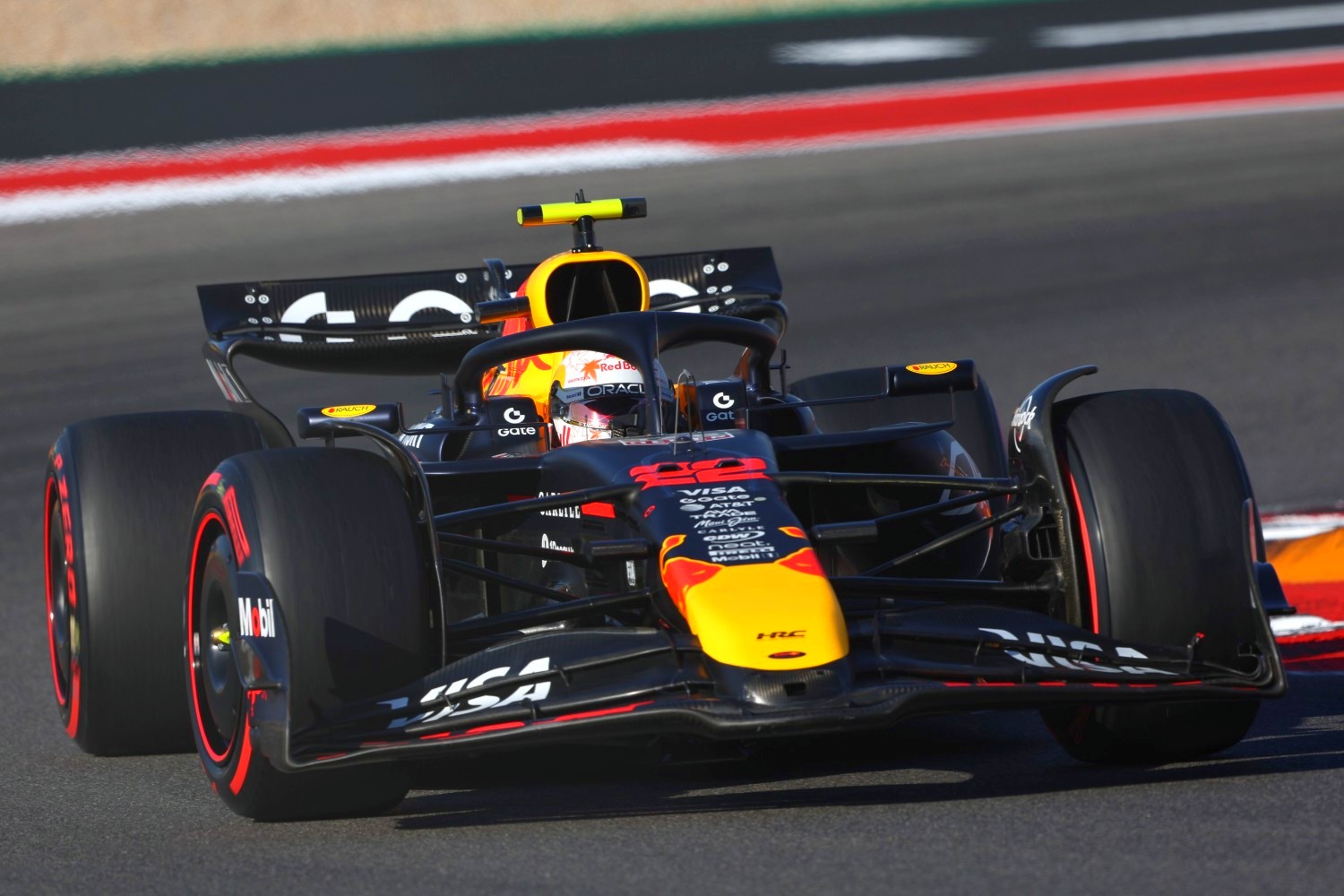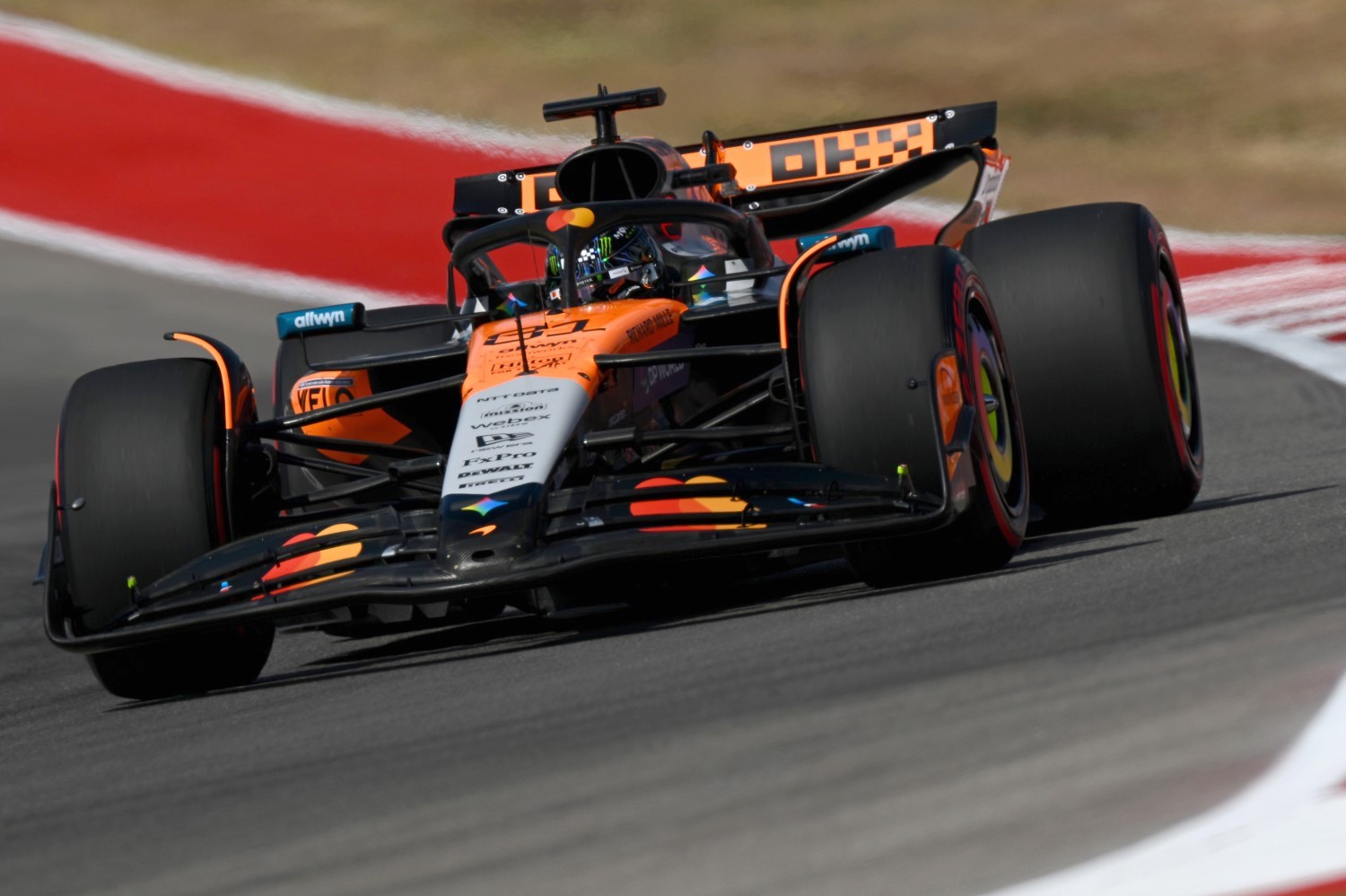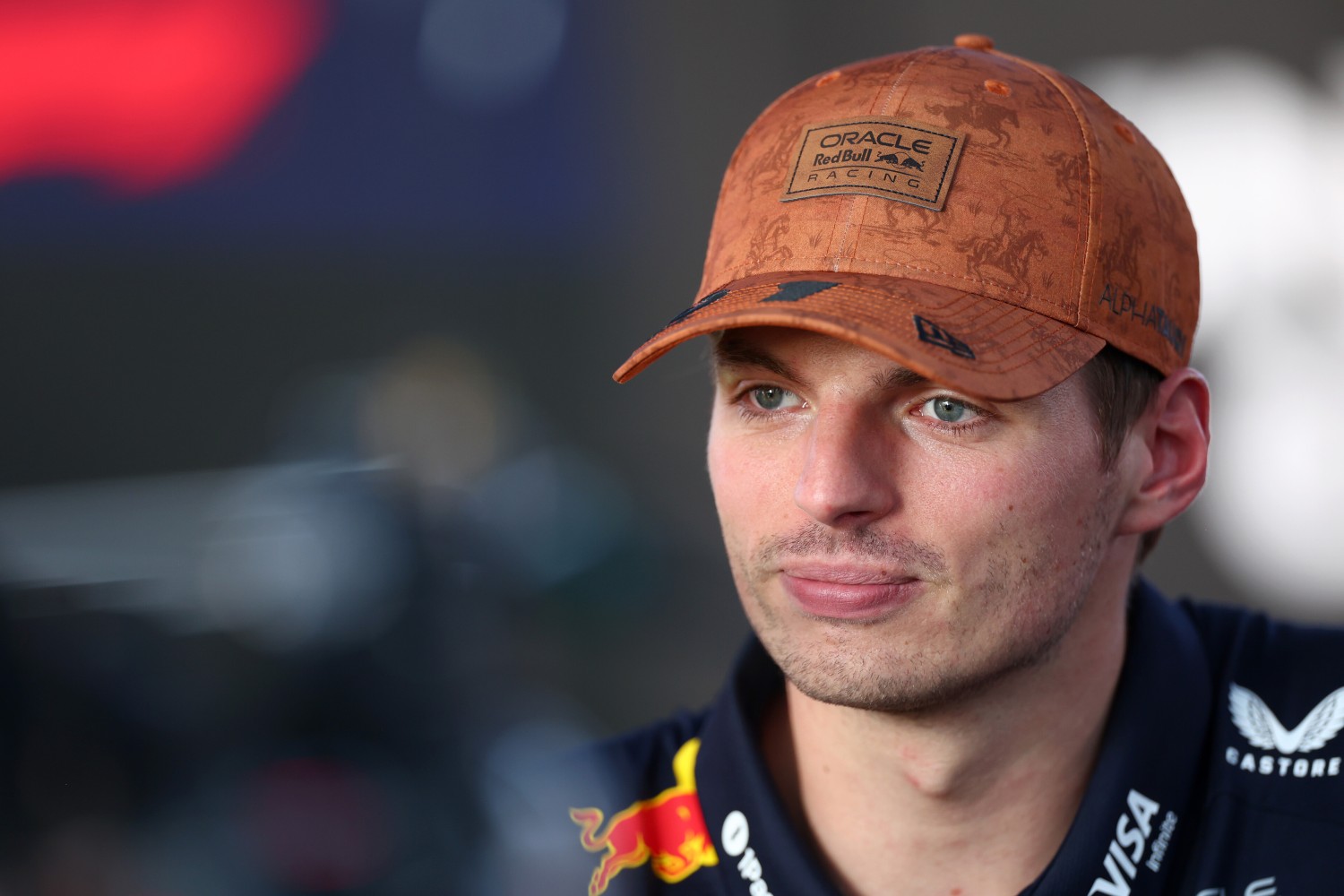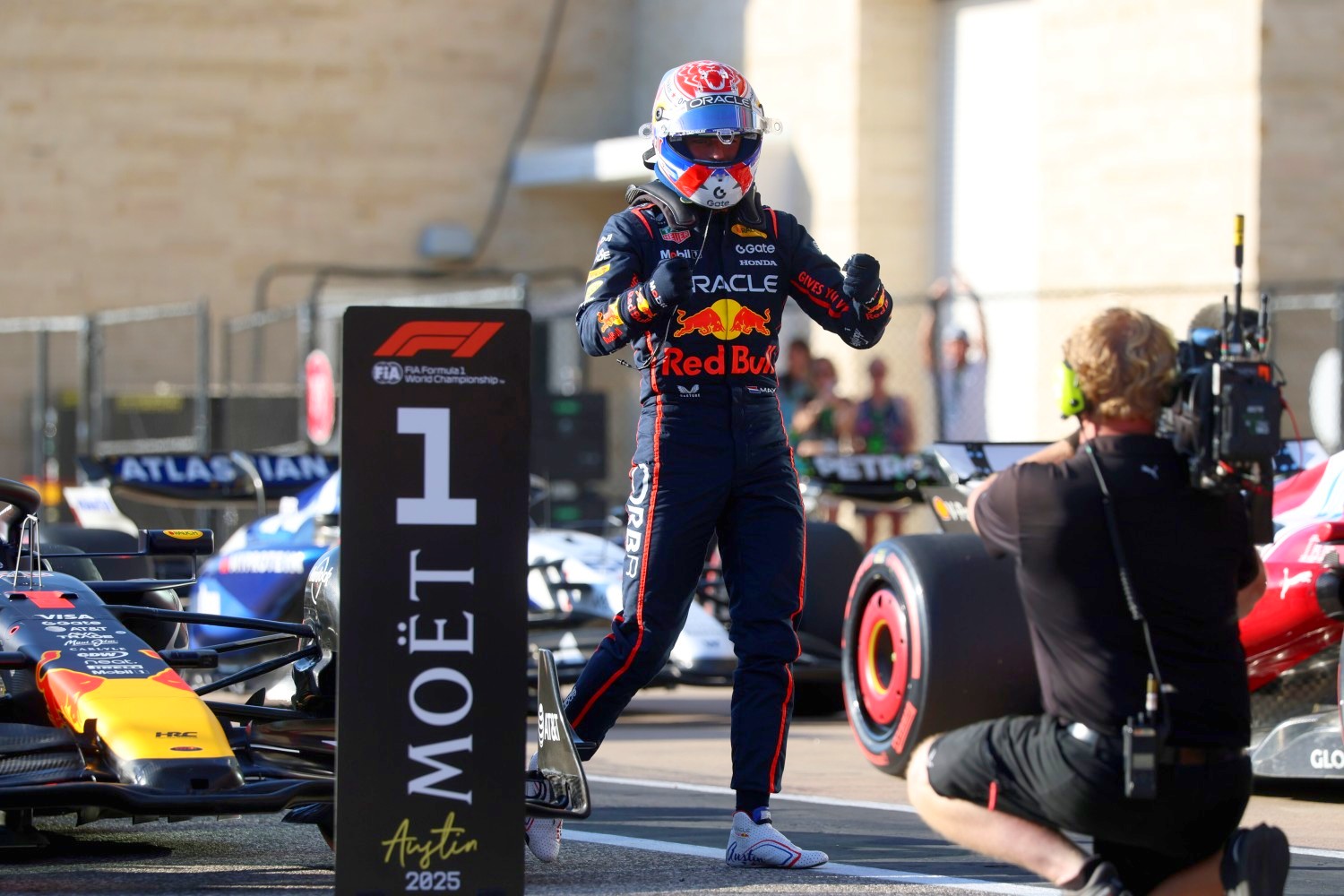Formula 1 News: Verstappen’s Genius Masks Red Bull’s Shortcomings in Austin Qualifying
OK, so McLaren is playing catch-up after a nightmare Turn 1 in the Sprint race eliminated both cars, leaving the picture from United States Grand Prix qualifying—a dominant Max Verstappen pole, this time by a convincing 0.291 seconds over Lando Norris—feeling a bit distorted.
–by Mark Cipolloni–
But the real question isn’t whether the Red Bull RB21, tweaked with that upgraded front wing debuted at Zandvoort, has suddenly become the outright fastest package. No, the RB21 isn’t fast on its own merits; it’s Verstappen who extracts every ounce of potential from it, turning a merely competitive car into a pole-sitter. His teammate, Yuki Tsunoda, languished in 13th on the grid in an identical machine, over 0.95 seconds adrift—a stark reminder that the Dutchman’s brilliance is the X-factor, not some aero wizardry.

Sure, Verstappen’s improvisational skills shone through in Saturday’s gustier, more unpredictable winds compared to Friday’s calmer session. His pole margin ballooned to nearly four times that of Sprint qualifying, but let’s not kid ourselves: this was less about Red Bull’s superiority and more about Max being Max.
Meanwhile, the McLaren duo—deprived of any meaningful Sprint running—lacked the vital track feel in a circuit where unwavering confidence through the high-speed opening sector is non-negotiable. Verstappen, George Russell, and others had banked 19 laps of experience in the shifted 90-degree wind, which made Norris and Oscar Piastri noticeably more cautious in Q1, where the reference gap hurt them most.

“There were also a few pieces of missing data in terms of the car and how we optimized it,” admitted McLaren team principal Andrea Stella. “When you run continuous laps, you learn about how you can optimize your car, and with this generation of car, if you can find that you can run just 1mm lower, that’s a significant amount of milliseconds of laptime. So we had to be more conservative in the setup without those laps.
“But the difference wasn’t just pole. We’re maybe 0.2s away in reality. At this point in the season and on the sort of circuits we’re racing now, Red Bull-Verstappen is just a faster combination than our car—but let’s be clear, it’s the Verstappen part that’s doing the heavy lifting.
“If we see the gap to Verstappen, and it’s measurable in tenths of a second, I think at least two tenths is a fair gap that we have today to Red Bull. But we have to admit that at the moment, it’s Verstappen and Red Bull as a package that’s competitive—though Tsunoda’s P13 today underscores that the car’s not carrying anyone; Max is carrying the car.
“We talked about the impact of the track layout, and I think this is true in Baku, it’s true in Singapore, and to some extent, it’s true in Austin. But the gaps we’re experiencing now to Verstappen can’t only be ascribed to the track layout or our Sprint misfortune. It’s clear that Red Bull have taken a step forward, but on our side, we need to look at how we can extract more out of the package—while acknowledging Max’s edge is driver-dependent.”
So, the Sprint wipeout likely cost McLaren a few hundredths in setup tweaks, and the confidence hit in those sweeping Esses was worth tenths more. But even stripping that away, there’s a genuine pace deficit—and it’s one Verstappen masterfully exploits, while Tsunoda flounders in the same hardware. The RB21 has historically punched above its weight in fast corners thanks to its low ride-height aero mapping, an edge that’s amplified on low-fuel, fresh-tire qualifying runs. Even accounting for Austin’s bumps forcing a higher setup, that trait persists—but only in capable hands.
Since introducing the flexi-wing and new floor combo, the car can indeed dip lower with better balance across corner speeds. Verstappen gushed about it on Friday, noting the rear felt far more planted than earlier in the year, allowing him to dial in extra front grip from the potent wing without sacrificing poise. By Saturday, though, even after his Sprint victory, he was more tempered: “It was very challenging because the tailwind in the first sector made it very tricky. It was a tailwind into the [seventh-gear] Esses, and that was moving the car about. You just couldn’t commit as much as yesterday.”

His pole lap, a 0.367-second dip from Friday’s benchmark despite just one Q3 flyer (he missed the checkered flag for a second run), still cleared the field by 0.291 seconds. The wind’s menace was evident right away in Q1, when Isack Hadjar spun wildly out of Turn 5 in the Racing Bulls, slamming into the wall at high speed.
Norris battled back admirably to P2, edging Charles Leclerc’s Ferrari and George Russell’s Mercedes by mere hundredths. Piastri, however, struggled more on his personal nemesis track, slotting into sixth behind Lewis Hamilton’s Ferrari—his deficits to Norris stemming from tenths lost in the Esses and a minor lock-up into Turn 11.
The wild, windy Esses amplified Verstappen’s natural edge over a single lap, especially with McLaren’s drivers easing off the throttle where others could push. But over race distance? McLaren’s superior rear-tire thermal management could flip the script, particularly as Red Bull’s development surge hasn’t closed the overall championship gap—Piastri leads with 336 points to Norris’s 314 and Verstappen’s 281. It’s only a hope now, not the lock it once was, but with Tsunoda mired in midfield mediocrity, Red Bull’s title hopes rest squarely on one man’s shoulders.
